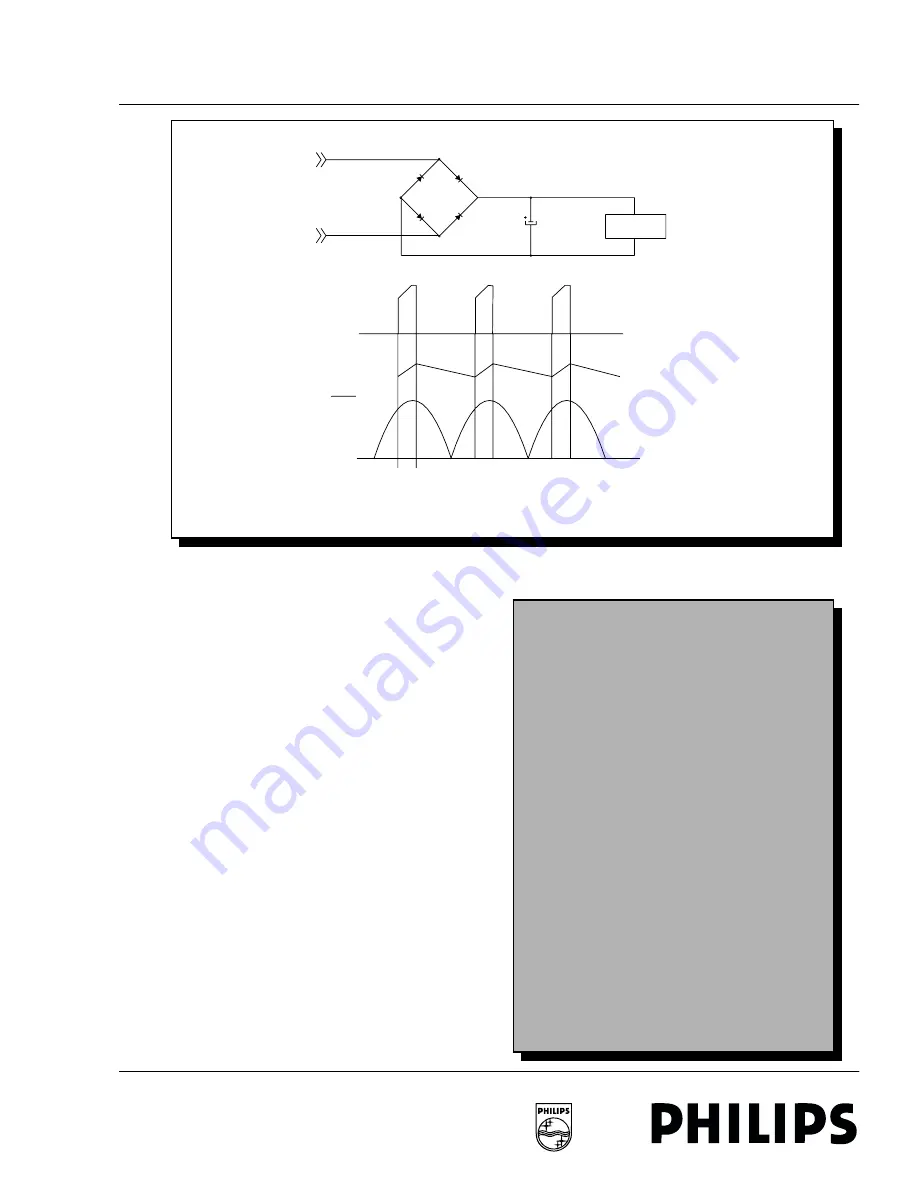
MG5.1E
4. Power supply
15
4.1 European power factor correction circuit
Personal notes
4.1
European power factor correction circuit
Figure 4-4
CAPACITOR
CHARGE
AC CURRENT
VOLTAGE
AC IN
BRIDGE
CAP
LOAD
A
B
CL 96532100_085.eps
121199
The input to most switching power supplies consists of a bridge
rectifier and a large electrolytic capacitor. (Figure 4-4) When
AC power is applied, the Capacitor will charge to approximately
1.4 times the RMS value of the applied AC voltage. This type of
supply does not draw current from the AC power source
through out the entire AC cycle. When the capacitor charge falls
to point "A", the instantaneous value of the AC voltage exceeds
the charge of the capacitor. The bridge diodes are then forward
biased, causing current to flow from the AC source. Current will
continue to flow from the AC line until the AC sinusoidal voltage
reaches its peak at Point "B". At this point, the charge on the
capacitor will exceed the AC line voltage reversing the bridge
diodes. This results in an AC current waveform that is narrow
and distorted compared to the AC voltage waveform. Non
sinusoidal waveforms have a high harmonic content, with
excessive peaks which results in a low power factor of 0.5 to
0.6. Power Factor is a ratio of real power divided by apparent
power. Excessive harmonics and peak currents reduce the
efficiency of the power distribution system.
The MG5.1 Projection TV without Power Factor correction has
a high harmonic content of 85 percent, creating a Power Factor
of 0.5. Current spikes of 7 amps will also be created in the AC
supply. With the Power Factor correction circuit, the peak
current is limited to 1.58 amps, with the harmonic content being
reduced to 4.5 percent. The Power Factor is increased to 0.99.
The ideal Power Factor is one, which occurs when the current
is sinusoidal and in phase with the voltage. The European
standard IEC1000 limits the current harmonic content of
equipment supplied by the AC Mains.
















































